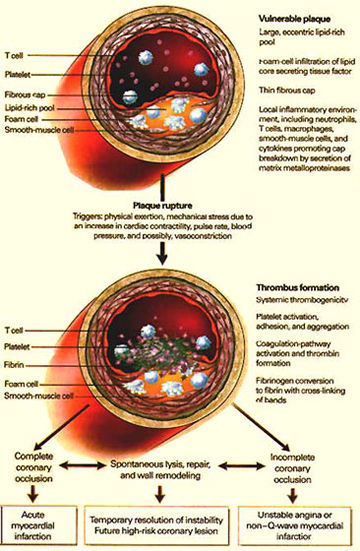
Figure
70
Pathophysiologic Events Culminating in the Clinical Syndrome of Unstable
Angina.
Numerous physiologic triggers probably initiate the rupture of a vulnerable plaque. Rupture leads to the activation, adhesion, and aggregation of platelets and the activation of the clotting cascade, resulting in the formation of an occlusive thrombus (clot). If this process leads to complete occlusion of the artery, then acute myocardial infarction with EKG ST-segment elevation (which indicates heart muscle injury) occurs. Alternatively, if the process leads to severe stenosis but the artery nonetheless remains patent, then unstable angina occurs.
Yeghiazarians, Y., Braunstein, J.B., Askari, A., Stone, P.H., Medical Progress: Unstable Angina Pectoris, The New England Journal of Medicine, Vol. 342, Jan 13-00, p 101-114. (modified)